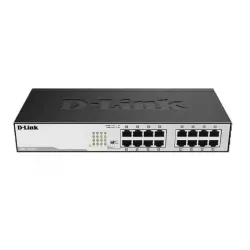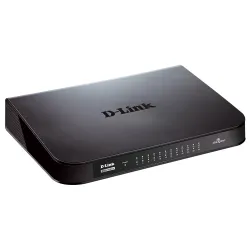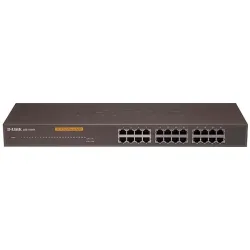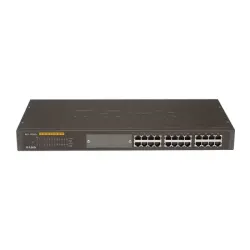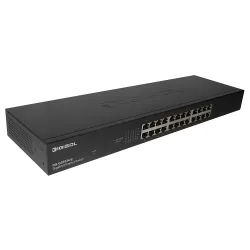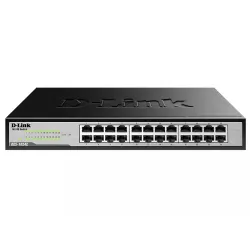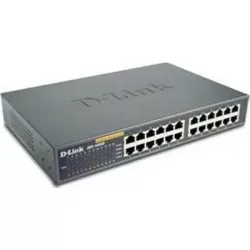Boost Your Network Efficiency with Refurbished Unmanaged Switches: IBM, D-LINK, ATEN, FS
Unmanaged switches are a type of network switch that operates without the need for any configuration or management by the user. Unlike managed switches, unmanaged switches are "plug-and-play" devices, which means that they are designed to work right out of the box without any need for configuration.
Unmanaged switches are typically used in small networks or home setups where network management and monitoring are not a priority. They are relatively simple and inexpensive devices that are designed to provide basic network connectivity without requiring any specialized knowledge or training to operate.
The benefits of unmanaged switches
Unmanaged switches are Easy to use
Yes, that is correct. Unmanaged switches are very easy to use because they require no configuration or management. You simply plug them in and they start working, allowing you to connect multiple devices together quickly and easily.
This makes them an ideal choice for home networks, small businesses, or any situation where you need to expand your network without requiring advanced features or technical knowledge.
Unmanaged switches are Affordable
Yes, unmanaged switches are generally more affordable than managed switches. This is because they have fewer features and require less hardware to support them, making them a more cost-effective option for small businesses or home users on a budget.
Unmanaged switches are a good choice for those who need basic network connectivity and expansion, without the need for advanced features such as VLANs, QoS, or advanced security features that are typically found in managed switches. Additionally, since they do not require any specialized knowledge or expertise to install and manage, they also help to reduce overall IT costs.
Plug and play
Yes, unmanaged switches are often referred to as "plug and play" switches because they are designed to be very easy to use. You simply plug in the power and the network cables, and the switch will automatically detect and connect all the devices that are connected to it. There is no need to configure or manage the switch, which makes it a very convenient option for home users or small businesses that do not have a dedicated IT staff or network administrator. With an unmanaged switch, you can quickly and easily expand your network without any technical knowledge or expertise.
Unmanaged switches are Low maintenance
Yes, unmanaged switches are generally low maintenance because they do not require any configuration or management. This means that there are no settings to configure, no firmware updates to install, and no logs to monitor. This makes them a good choice for small businesses or home users who do not have dedicated IT staff to manage their network.
With an unmanaged switch, you can simply plug it in and forget about it, as it will continue to work reliably and efficiently without any intervention from you. Additionally, since they have fewer features than managed switches, they tend to have a longer lifespan and require less frequent replacement, further reducing maintenance costs.
Unmanaged switches are High reliability
Unmanaged switches are generally considered to be highly reliable because they have a simple design and are built for plug-and-play operation. They do not have any advanced features that can introduce complexity or potential points of failure, which means that they are less likely to experience downtime or performance issues. Additionally, because they do not require any management, there are fewer opportunities for human error that can cause problems. Unmanaged switches also tend to have a longer lifespan than managed switches because they have fewer components and are less likely to experience firmware or software issues. Overall, unmanaged switches are a reliable and cost-effective choice for small networks or simple home setups that do not require advanced features.
What does unmanaged switch mean?
An unmanaged switch is a type of network switch that operates without any configuration or management by the user. In other words, it is a plug-and-play device that can be used right out of the box without any need for specialized knowledge or training to operate. Unlike managed switches, unmanaged switches have a fixed set of features and do not allow the user to configure or customize the network settings. They are typically used in small networks or home setups where network management and monitoring are not a priority, and basic network connectivity is sufficient.
How do you use an unmanaged switch?
Connect power first, connect the power adapter to the switch, and plug it into an electrical outlet. Connect devices next, connect the devices you want to network to the switch using Ethernet cables. Simply plug one end of the Ethernet cable into the device you want to connect, and the other end into one of the available Ethernet ports on the switch. Repeat this process for each device you want to connect. Power on the device's power on the devices you have connected to the switch, such as computers or printers. Verify network connectivity so that the devices are connected to the network and can communicate with each other.
The number of ports on an unmanaged switch can vary depending on the model and manufacturer. However, most unmanaged switches typically have between 4 and 24 ports. Some models may have fewer than 4 ports, while others may have more than 24. When choosing an unmanaged switch, it's important to consider the number of ports you need based on the number of devices you want to connect to the network. If you only have a few devices, a switch with 4 or 8 ports may be sufficient. However, if you have a larger number of devices or plan to expand your network in the future, a switch with more ports may be more appropriate.
If you are referring to a network switch manufactured by IBM, it is a networking device that is used to connect multiple devices within a computer network. IBM has a range of switches, including Ethernet switches, SAN switches, and converged switches that provide various features and capabilities for different networking needs. These switches can range from small, unmanaged switches to larger, managed switches with advanced features such as VLANs, QoS, and security.
Aten unmanaged switches can be used to connect multiple network devices such as computers, servers, printers, and other networking equipment to a single network. Aten unmanaged switches allow you to expand your network by adding additional ports, which can be used to connect new devices or to provide additional bandwidth for existing devices. Aten unmanaged switches can help improve network performance by reducing network congestion and improving data transfer speeds.
D-Link is a reputable brand in the networking industry and has a range of switches that are suitable for various applications. Their switches are generally considered to be reliable and easy to use, making them a popular choice for small to medium-sized businesses and home networks. However, as with any product, there can be variations in quality and performance between different models and versions. It's important to research and compares the features and specifications of different switches to find the one that best meets your specific needs and budget.

